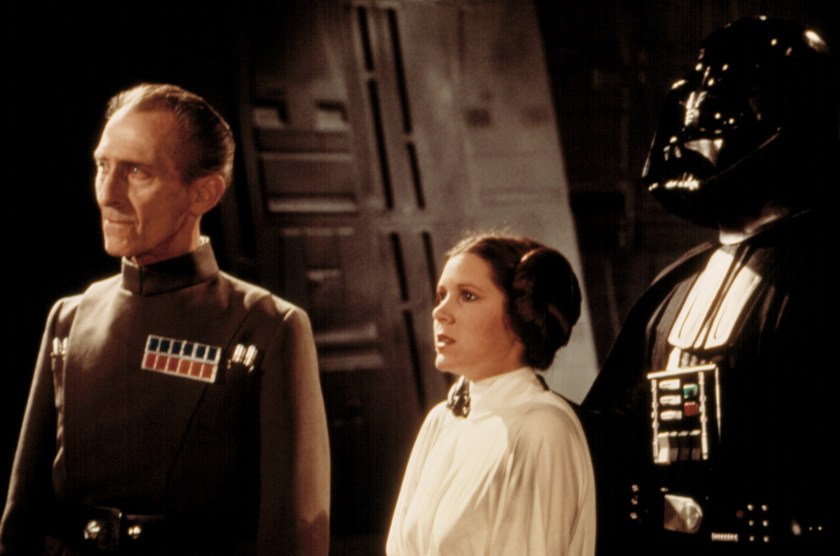
The latest Star Wars blockbuster, Rogue One, joins a number of films and commercials that have employed CGI to literally bring actors back from the dead. But just because it’s possible, doesn’t mean it’s ethical or legal.
While inserting deceased actors into films via body doubles or CGI is nothing altogether new (it’s been around for decades), technology has advanced to the point where filmmakers can essentially “reanimate” dead actors and allow them to “perform.” Regardless of the impressive technical feat that brings this about, it raises some serious ethical and moral questions about repurposing someone’s likeness for financial gain or even artistic integrity.
One of the latest examples? Rogue One featured original Star Wars: Episode IV character Grand Moff Tarkin (teased before the film’s release), who was originally portrayed by Peter Cushing. The only problem was that Cushing had died 20 years prior. It turns out that the actor’s estate gave Rogue One‘s producers the needed permission to use his likeness in the film. While the film’s creators insist Cushing would have appreciated the recreation, Guy Henry, who did the motion capture performance in place of the deceased Cushing, told The Hollywood Reporter that he hopes “it won’t be a commonplace thing.”
Despite Henry’s hope, digital resurrection has already been commonplace, and and it’s not always done with permission. The most notable example of is 1982’s Trail of Pink Panther, which began filming a year and a half after lead actor Peter Sellers’ death. The filmmakers used outtakes of Sellers from previous films and a double with bandages over his face to recreate the role of Inspector Clouseau. Sellers’ widow, Lynne Frederick, was awarded $1 million in damages after she sued the film studio for repurposing footage left on the cutting room floor. “It was an appalling film: Not a tribute to my husband but an insult to his memory,” Frederick said in the 1985 lawsuit.
Studios also digitally resurrect actors when they die in the middle of a TV show or film’s production, as was the case with Nancy Marchand in The Sopranos and Paul Walker in Fast Seven. In this case, directors and producers will often reach out to the estate for permission to recreate their performance for continuity or artistic integrity. But sometimes this borders on opportunism. Given how successful Fast Seven was at the box office (it was the sixth highest-grossing film of all time), it’s understandably difficult for filmmakers to resist the temptation.
Even with permission, resurrecting actors often makes viewers uncomfortable, especially when it comes to commercials. Before 1979, when a court case ruled that deceased actors’ relatives had final say in their loved ones’ likenesses being used on film, the practice was fair game (but seen as taboo). Since then, audiences have become more accepting of seeing silver screen icons like Audrey Hepburn (above), Fred Astaire (below), Gene Kelly, and Steve McQueen used to peddle products. Roger Richman, a California-based attorney specializing in these cases, told ABC News that “You have to control the legacies of these legends … to prevent other people from abusing it.”
Ultimately, it comes down to what is viewed as “abuse” versus paying homage, and that’s inherently subjective. As far as the Star Wars franchise is concerned, Carrie Fisher‘s death presents the filmmakers another opportunity to employ this technique. While she finished shooting her scenes for the next film, it’s possible her character might appear in future installments. One thing is certain: As the ability to create photorealistic depictions of deceased actors improves, more filmmakers will be tempted to use it.
To learn how the Rogue One crew brought the late Peter Cushing’s Grand Moff Tarkin to life, watch the video below.
—RealClearLife Staff
This article was featured in the InsideHook newsletter. Sign up now.